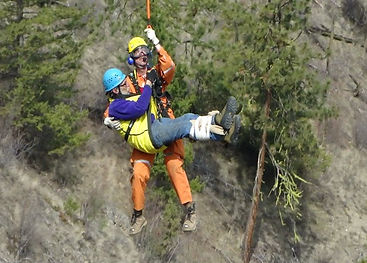
Wilderness Medicine
This week in BC alone, hundreds of paddlers will overturn their canoes, skiers will tumble, climbers will fall, hikers will shiver and get lost and too many mountain bikers will fly over their handlebars. And these mishaps will probably happen far from the benefits of a hospital or an ambulance. Come Monday morning the carnage will be many cuts and bruises, sprained ankles, near drownings, a fracture or two, and perhaps even a fatality. Such is the life of we outdoor adventurers, we play a rough game and we often play it in remote settings. We willingly do this in spite of the risks, (or maybe because of them) preferring these recreational pursuits to the more conventional golf and soccer options.
The risks inherent in these outdoor sports will always be part of them as will the added risk of where we do them so it’s only prudent that we do what we can to manage the risks. Developing a healthy “what if” attitude is a good idea. What if Joe sprains his ankle, what if the weather turns bad, what if Mary catches a gust on launch and suffers a spinal injury? Are we prepared to deal with such situations? In urban settings these are not as serious as we have the option to phone for an ambulance or simply drive to the hospital. But even a sprained ankle far from a road could become fatal. In the wilderness WE have to manage the specific injury, keep the patient from becoming cold, and transport them back to the car.
An accident in the backcountry won’t look like the spectacular swooping helicopter we see on TV but more likely an arduous, muddy, exhausting effort that will disrupt the day of many people.Our backcountry care is elemental at best as we will have only a small first-aid kit and the training we’ve done. We are limited in what we can do for our injured friends so the better we can build a kit and learn to improvise….the better.




